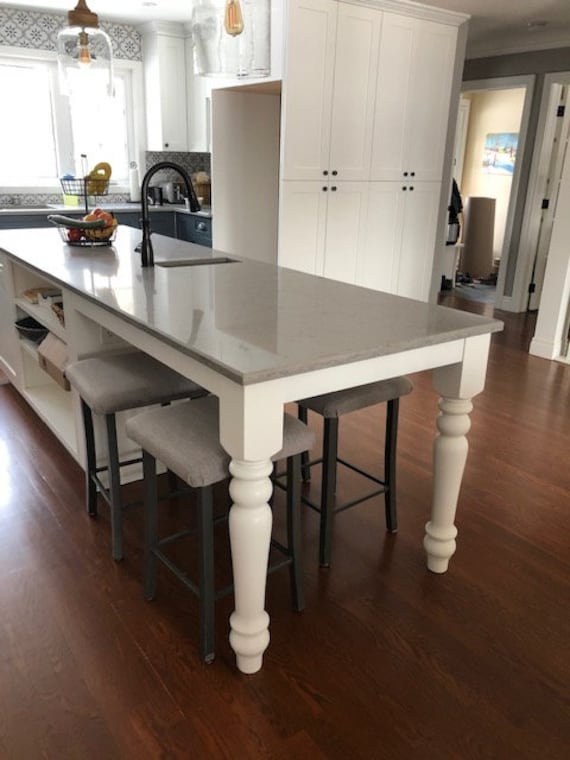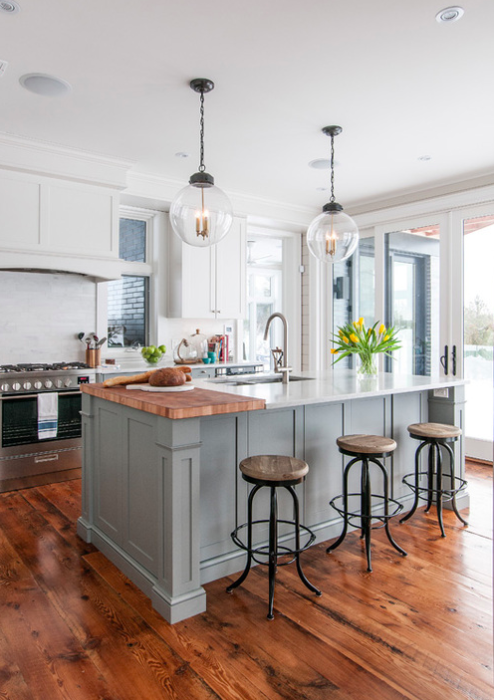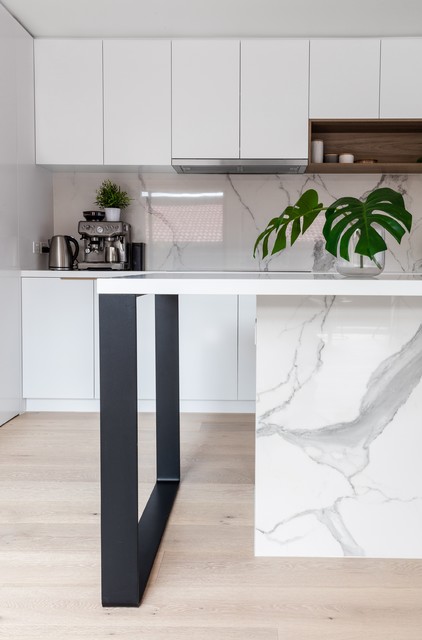Kitchen Island Legs: Improve Your Kitchen with Solid Support
Kitchen Island Legs: Improve Your Kitchen with Solid Support
Blog Article
A Guide to Picking the Perfect Kitchen Area Island for Your Home
Selecting the ideal kitchen island is a multi-faceted choice that can dramatically influence both the functionality and aesthetic appeals of your home. Understanding your kitchen area's spatial characteristics is the preliminary step, making certain that the island fits effortlessly without interrupting the flow. Beyond room considerations, identifying the main function of the island-- be it for dish prep work, eating, or additional storage space-- is crucial. The selection of surfaces and products likewise plays an important function in harmonizing the island with your kitchen area's general style. As we check out these aspects further, the nuances of each decision will end up being clear.
Assessing Your Space
Before picking a kitchen area island, it is necessary to completely analyze your space to ensure the addition will be both useful and visually pleasing. Begin by gauging the readily available location, including the size, length, and height of the kitchen area. Accurate measurements are critical to stay clear of purchasing an island that bewilders the room or one that is disproportionately small.
Think about the existing design and just how the island will certainly incorporate with the current website traffic circulation. A well-placed island must not block paths or restrain access to essential appliances, such as the fridge, stove, and sink. Leave appropriate clearance room-- generally around 36 to 48 inches on all sides-- to enable comfortable motion and work space efficiency.
Following, assess the natural light and sightlines within your kitchen area. An island that obstructs a window or disrupts aesthetic cohesion can make the space really feel dark and cramped. Consider exactly how the island's placement will certainly influence illumination and exposure, guaranteeing it boosts instead of interferes with the kitchen's ambiance.
Figuring Out the Objective
Identifying the objective of your kitchen area island is an essential action in ensuring it fulfills your details demands and preferences. Before delving right into style or dimension considerations, it is necessary to clarify what main function the island will offer in your kitchen area. Will it be a central center for meal preparation, a casual eating area, or potentially an added storage space option?
Furthermore, sufficient counter room for chopping and mixing, along with accessible storage space for cooking area tools and components, can change the island right into a reliable workstation. On the other hand, if the island is planned to offer or promote social interactions as a dining area, seating arrangements end up being paramount.

Selecting the Right Size
Picking the right size for your kitchen island is a balance of capability and area optimization. An excellent kitchen island must offer sufficient work space while guaranteeing that movement around the kitchen remains unblocked. Begin by gauging your kitchen area room; a minimum clearance of 36 to 42 inches around the island is needed to enable for comfortable motion and accessibility.
The dimensions of the island ought to show its designated usage. If the island will certainly serve largely as a prep area, a size of 24 to 36 inches could be adequate.

Finally, ensure that the island's size complements the general kitchen area layout, staying clear of any kind of frustrating visibility that might interfere with the kitchen's aesthetic and energy - kitchen island legs. Cautious preparation and precise dimensions will help you attain a harmonious and reliable cooking area setting
Picking Products and Finishes
After determining the suitable size for your kitchen area island, the next action involves picking ideal materials and coatings. The selection of materials considerably influences both the visual charm and functionality of your kitchen area island. Popular materials for counter tops include butcher, granite, and quartz block, each offering distinctive advantages.
Along with the counter top, consider the products for the island base. Strong wood provides a classic, tough look, while stainless steel gives a sleek, modern appearance and is easy to clean. Painted coatings can introduce a sprinkle of shade, with choices ranging from low-key pastels to vibrant, dynamic tones.
Pay focus to the resilience of coatings, especially in high-traffic locations, to preserve the island's appearance over time. Selecting the best products this contact form and finishes will boost both the functionality and visual charm of your kitchen island.
Integrating Functional Features
Integrating functional features right into your cooking area island can dramatically enhance its utility and convenience, changing it into a flexible centerpiece of your cooking area. One essential function to take into consideration is extra storage space. Integrating cabinets, drawers, and open shelving can offer much-needed space for kitchenware, utensils, and little home appliances, aiding to preserve a clutter-free atmosphere.
One more useful enhancement is an integrated sink or cooktop, which can improve meal preparation and clean-up procedures. A sink can facilitate tasks such as cleaning veggies and cleansing recipes, while a cooktop can permit food preparation straight on the island, promoting a more social and interactive cooking experience.
Take into consideration incorporating seating alternatives, especially if your kitchen doubles as a casual eating location. Bar feceses or integrated benches can change the island into a multifunctional room for meals, research, or laid-back celebrations.
Last but not least, integrating electric outlets right into your kitchen island can enhance its practicality. Electrical outlets offer convenient accessibility for small kitchen area devices, billing terminals for digital devices, and additional illumination alternatives.
Conclusion

Prior to choosing a kitchen island, it is important to extensively evaluate your space to make sure the enhancement will be both useful and visually pleasing.Choosing the appropriate size for your kitchen area island is a check this site out balance of functionality and space optimization. kitchen island legs. An excellent kitchen area island need to provide adequate workspace while making certain that motion around the kitchen area continues to be unblocked.Including useful functions right into your cooking area island can dramatically boost its utility and ease, changing it into a flexible centerpiece of your cooking area.In verdict, picking the suitable kitchen area island requires a complete assessment of the readily available area, quality regarding its main feature, and careful factor to consider a fantastic read of the ideal dimension and materials
Report this page